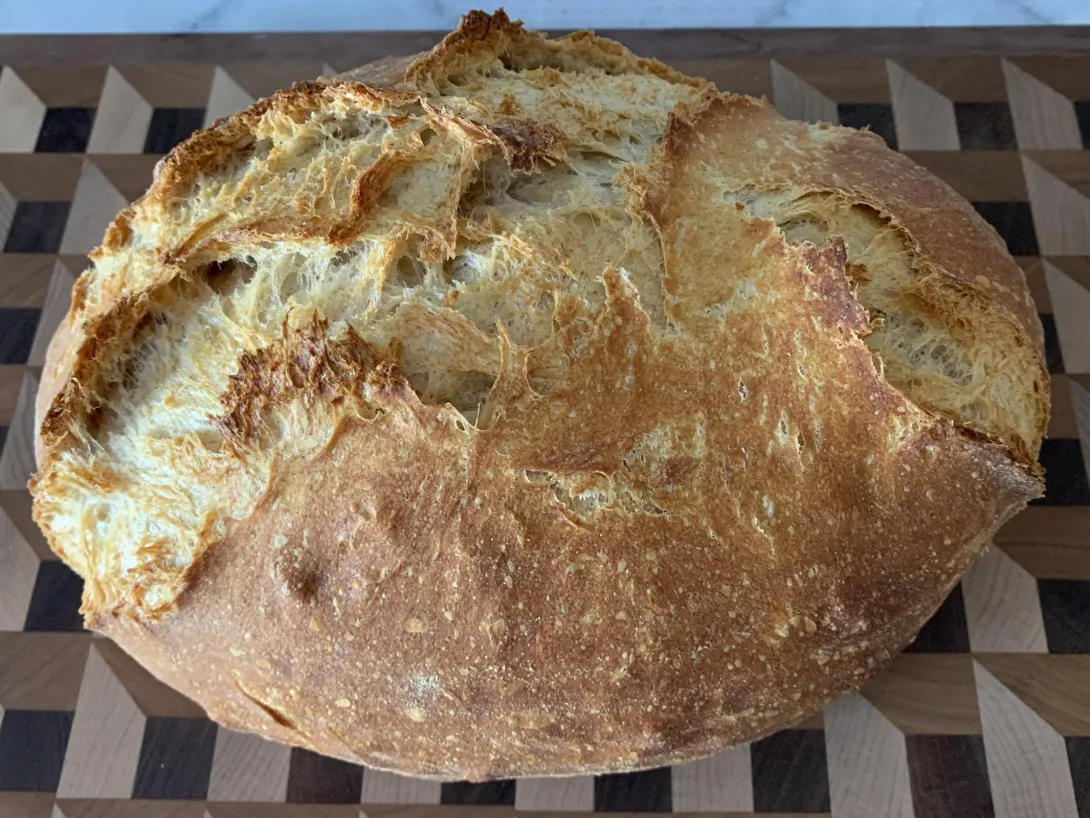
The basis for this recipe is from Hamelman's Bread (3rd Ed.). Two main changes: I used RYW (the one giving me "yogurty" levains) for half the pre-ferment water and I "caramelized" potatoes instead of roasting them. With the baking steel, I have trouble with the starches from the potatoes burning the bottom crust, so this was cooked at lower temps and the top element shield removed after steaming to get color into the top crust. Worked quite well.
Makes one loaf...
Total Dough
200g All-Purpose Flour (50%)
140g Bread Flour (35%)
60g Whole Wheat Flour (15%)
40g Raisin Yeast Water (10%)
240g Water (60%)
9.6g Salt (2.4%)
2.4g ADY (0.6%)
100g Gold Potatoes (25%)
3g Butter (3%)
Pate Fermente (30% PFF)
120g Bread Flour
40g Raisin Yeast Water
38g Water
2.4g Salt
0.1g ADY
Caramelized Potatoes
100g Gold Potatoes (other potatoes should work fine) (uncooked weight)
3g Butter
Final Dough
200g All-Purpose Flour
20g Bread Flour
60g Whole Wheat
202g Water
7.2g Salt
2.3g Yeast
Method
The night before
1) Prepare pate fermente by combining all ingredients and lightly knead until smooth. Place in covered bowl and ferment for 12-14 hours at 70-72 deg F
The next morning
1) Cut potatoes into 1/4" - 1/2" cubes and place in covered frying pan with butter on low heat. Make sure to keep the heat low and slow to not brown the potatoes and slowly caramelize them. Stir every 10-20 minutes to cook evenly. Potatoes are ready when they start getting sticky and mushy (90-120 minutes). Remove from heat and let cool.
2) Weigh cooked potatoes and place them in a NutriBullet. To that, add an equivalent weight of Final Dough water (ex. 85g potatoes and 85g of the Final Dough water). Make sure to keep track of the water used in this step and subtract it from the Final Dough water amount. Blend the potato/water mixture in the NutriBullet until a pudding-like consistency with no potato chunks is reached.
3) Dissolve yeast in remaining water.
4) Combine all ingredients including salt and start to mix. Add chunks of pate feremente while mixing to incorporate it. Mix until flours are wetted. Adjust hydration if needed.
5) Fermentolyse for 20 minutes
6) Develop gluten; FF x 25 (three sets with 5 minute rests); Bowl Kneading (two sets with 10 minute rests)
7) Bulk ferment at 76 deg F until dough has doubled
8) Degas dough and pre-shape into boule
9) Bench rest for 15-20 minutes
10) Final shape as oval and place in banneton with seam side down. To shape, take rested dough and flatten into round shape while degassing. Take edge closest to you and fold to the middle. Take right side and fold to just past middle. Take left and fold to just past the center. Take side furthest from you and pull over to center. Lastly, roll dough away from you so seam is on the bottom. Using cupped hands, pull dough toward you gently a couple inches. Rotate the boule 90 deg and repeat the gentle pull. Repeat on all four sides. This is to round off the dough and get the seams on the bottom. Once round, pull the dough toward you more firmly 2-3" to put tension in the surface of the dough. Rotate it 180 degrees and repeat letting the dough extend into an oval. Keep rotating 180 degrees and pulling dough to you until desired oval shape and dough tension is reached. Once an oval shape is reached, spin the dough on the bench for 1-1.5 revolutions to help seal the bottom.
11) Final proof at 76 deg F
12) Pre-heat oven at 410 deg F for 1 hour with oven set for steaming and top element shield in place. Turn dough out of banneton onto parchment paper and mist with water. Let dough sit on bench until seams just start to show. Place dough on oven steel with steam pan below it on bottom rack and add 3/4 cup boiling water to steam pan. Bake at 410 deg F (20 minutes); vent oven and remove top element shield; reduce heat and bake at 400 deg F (20-25 minutes); internal temp target 208-210 deg F
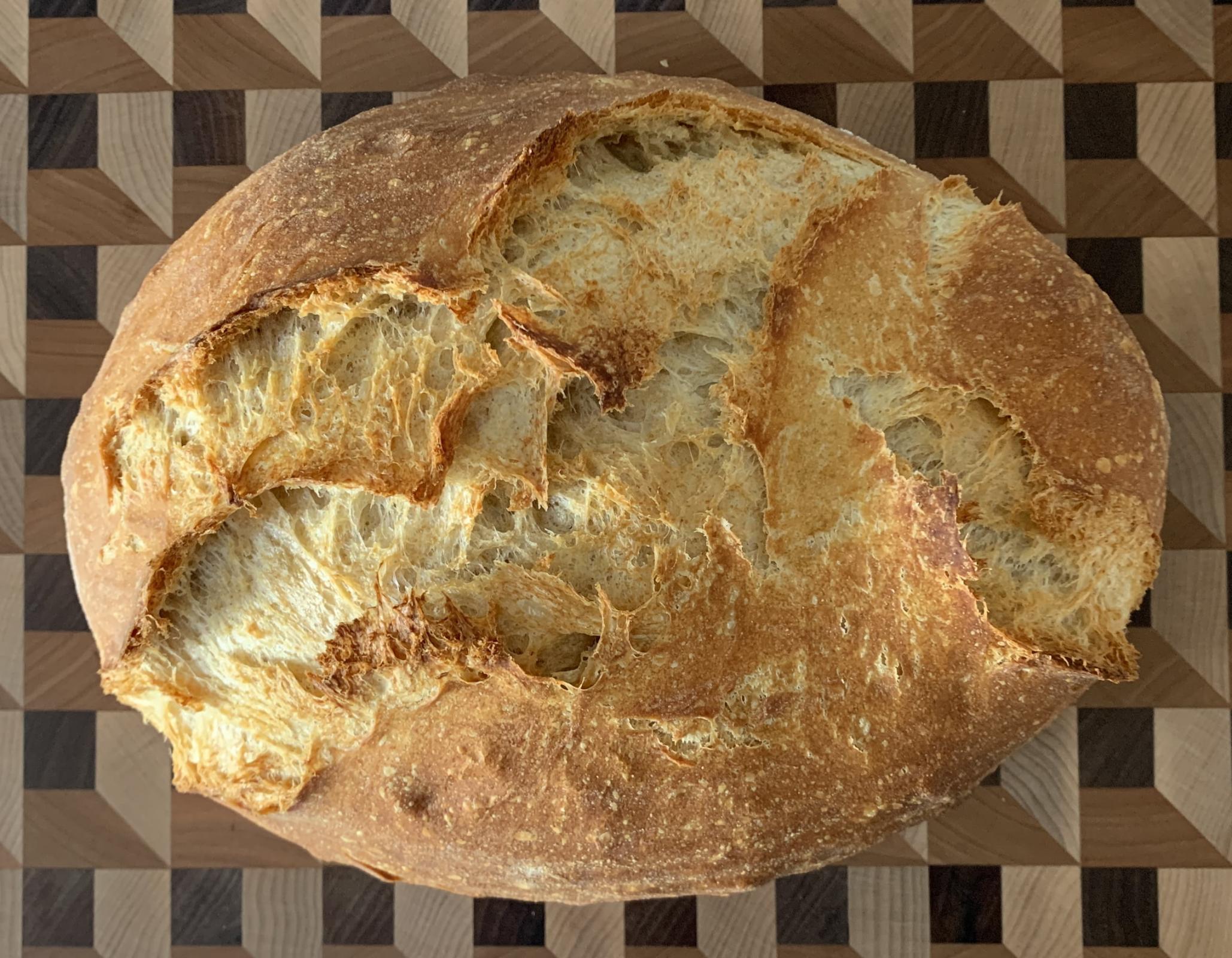
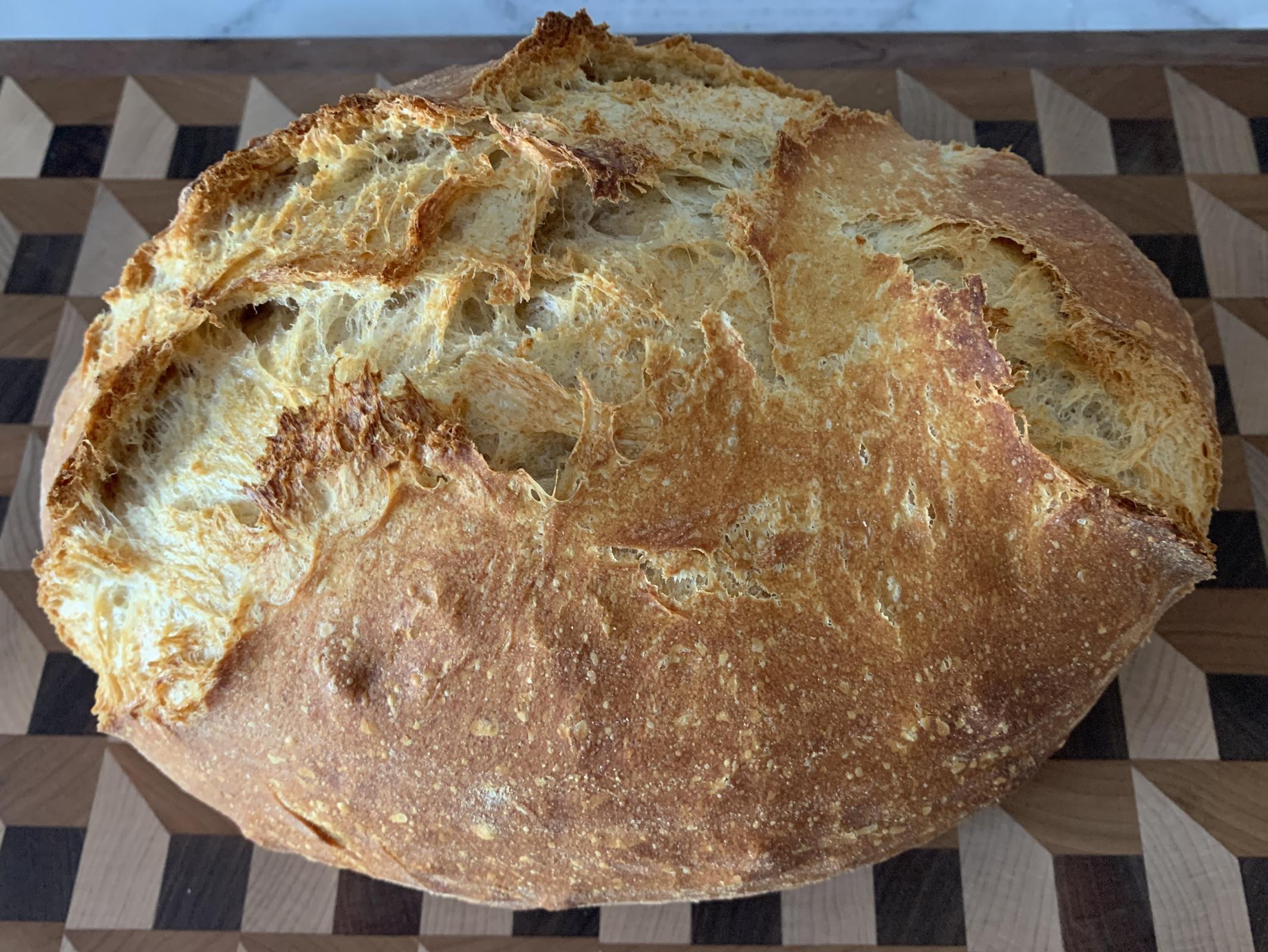
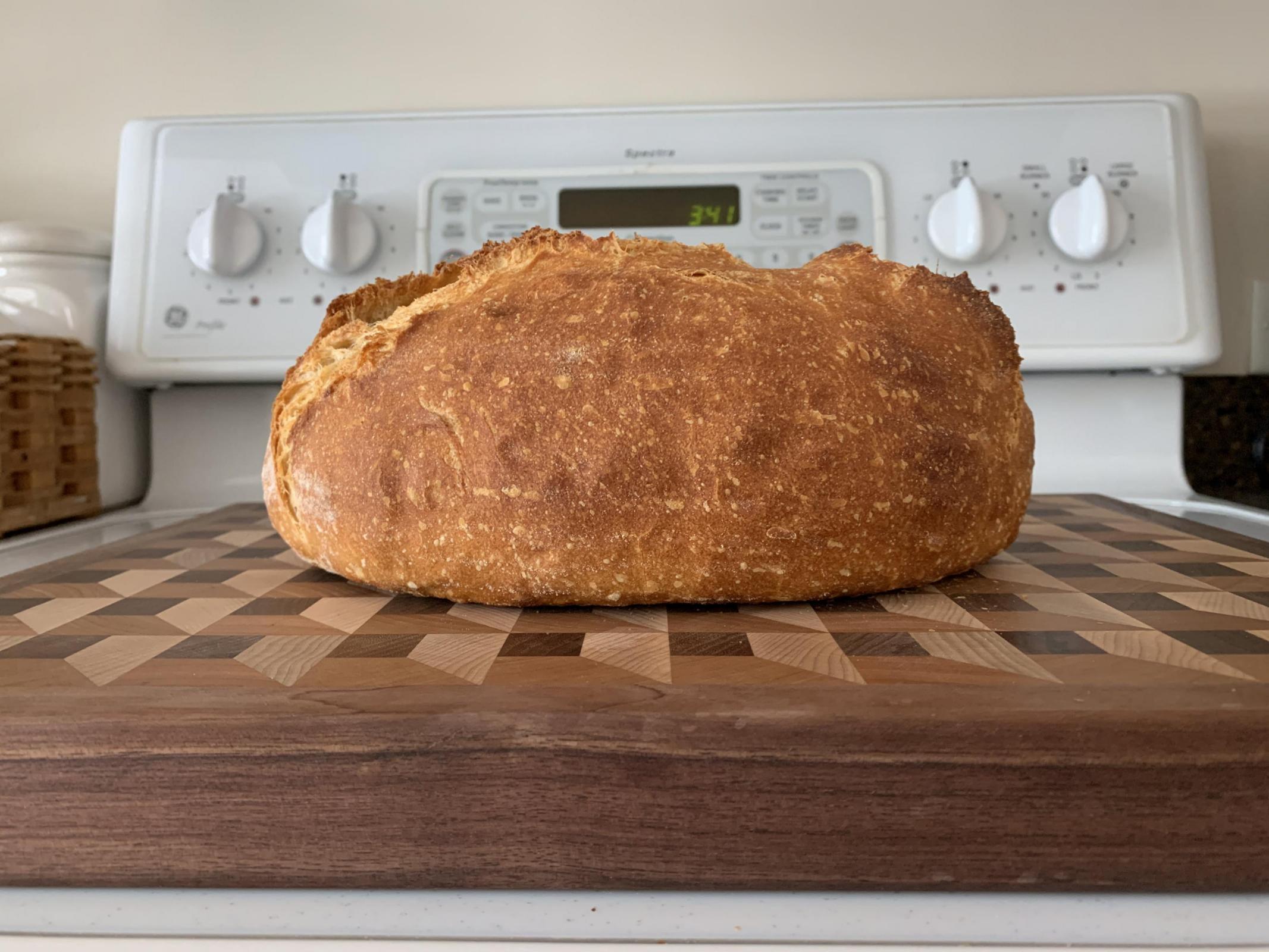
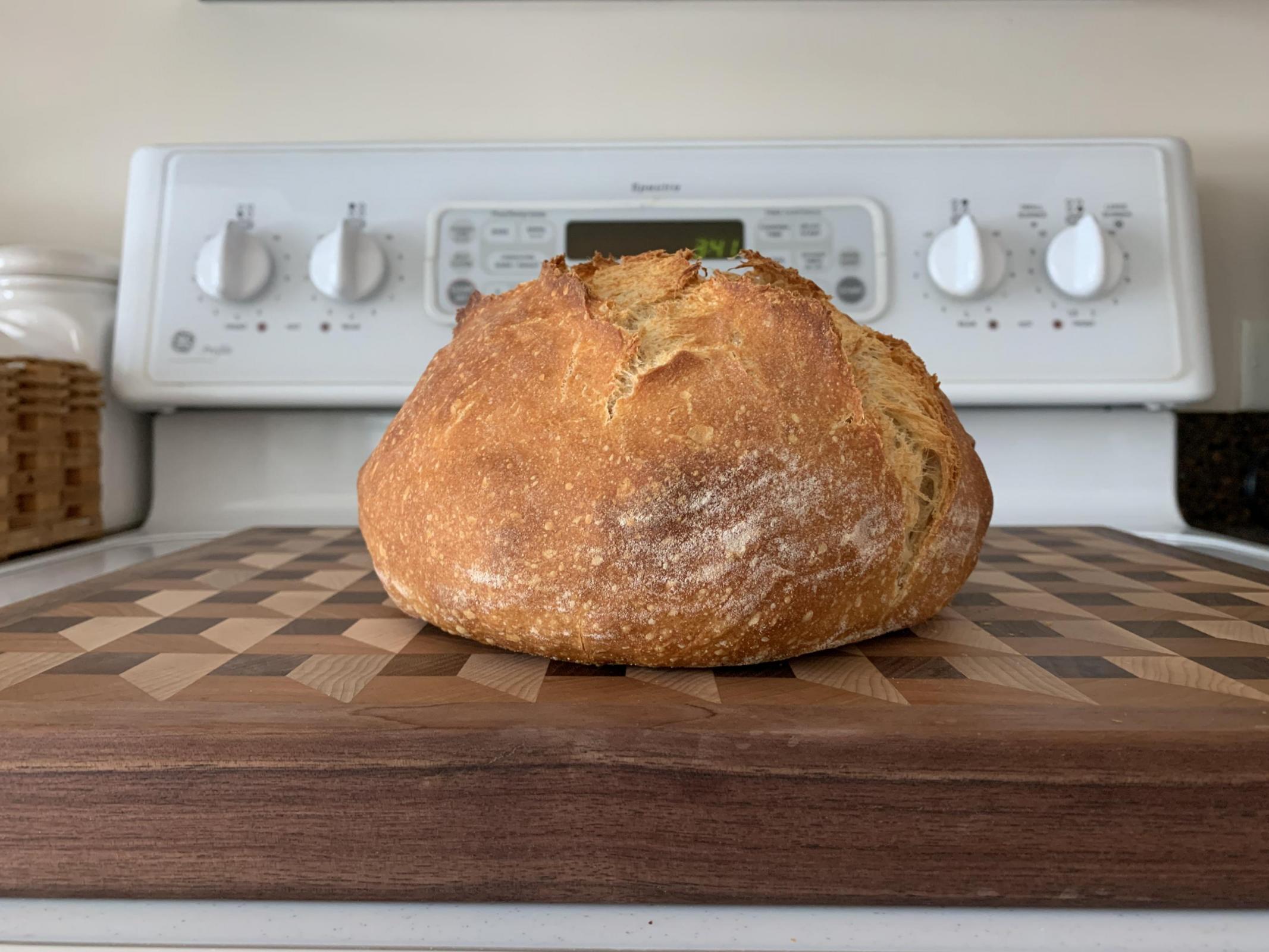
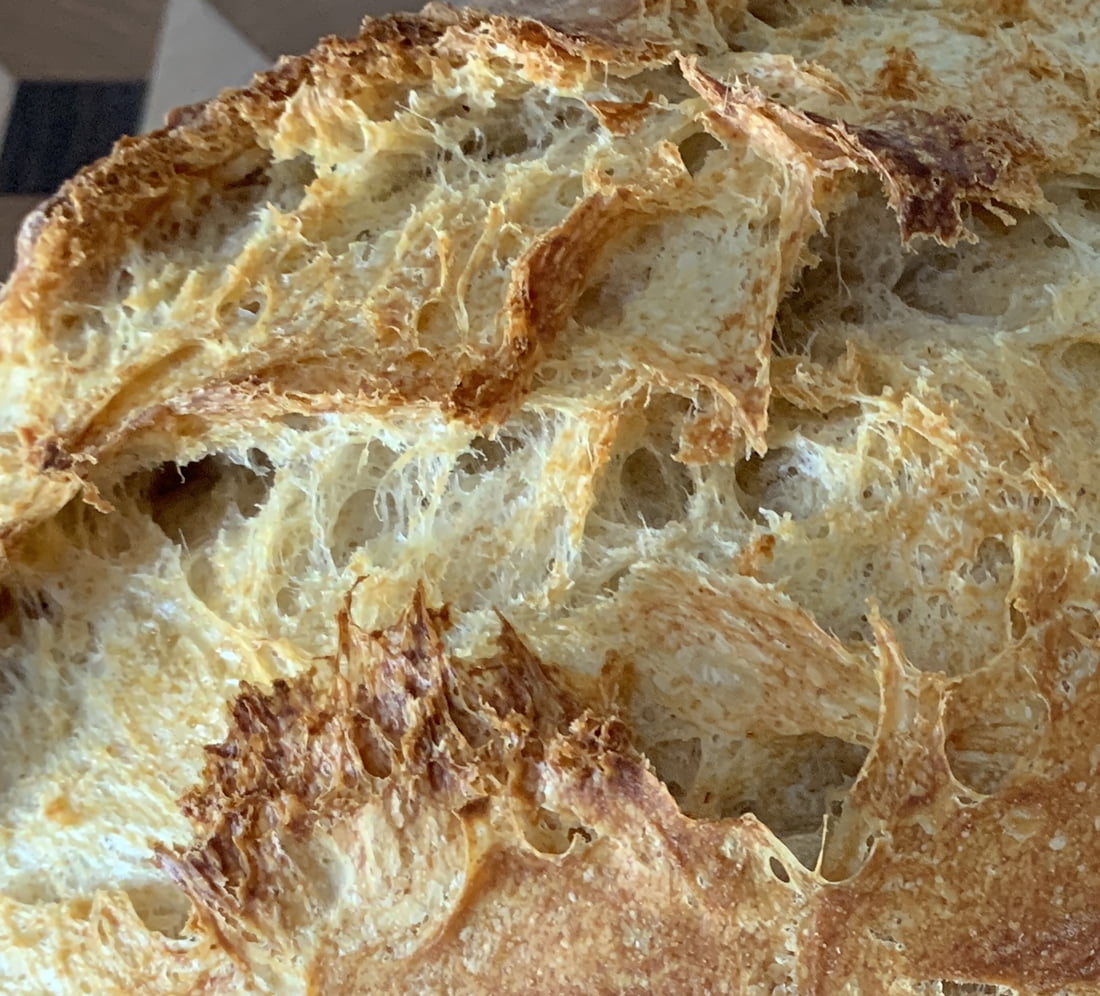
Not sure where the large bubbles came from, especially the one near the surface. I thought I degassed it pretty well, but maybe not. Very happy with the size, texture, and uniformity of the crumb. It's quite soft.
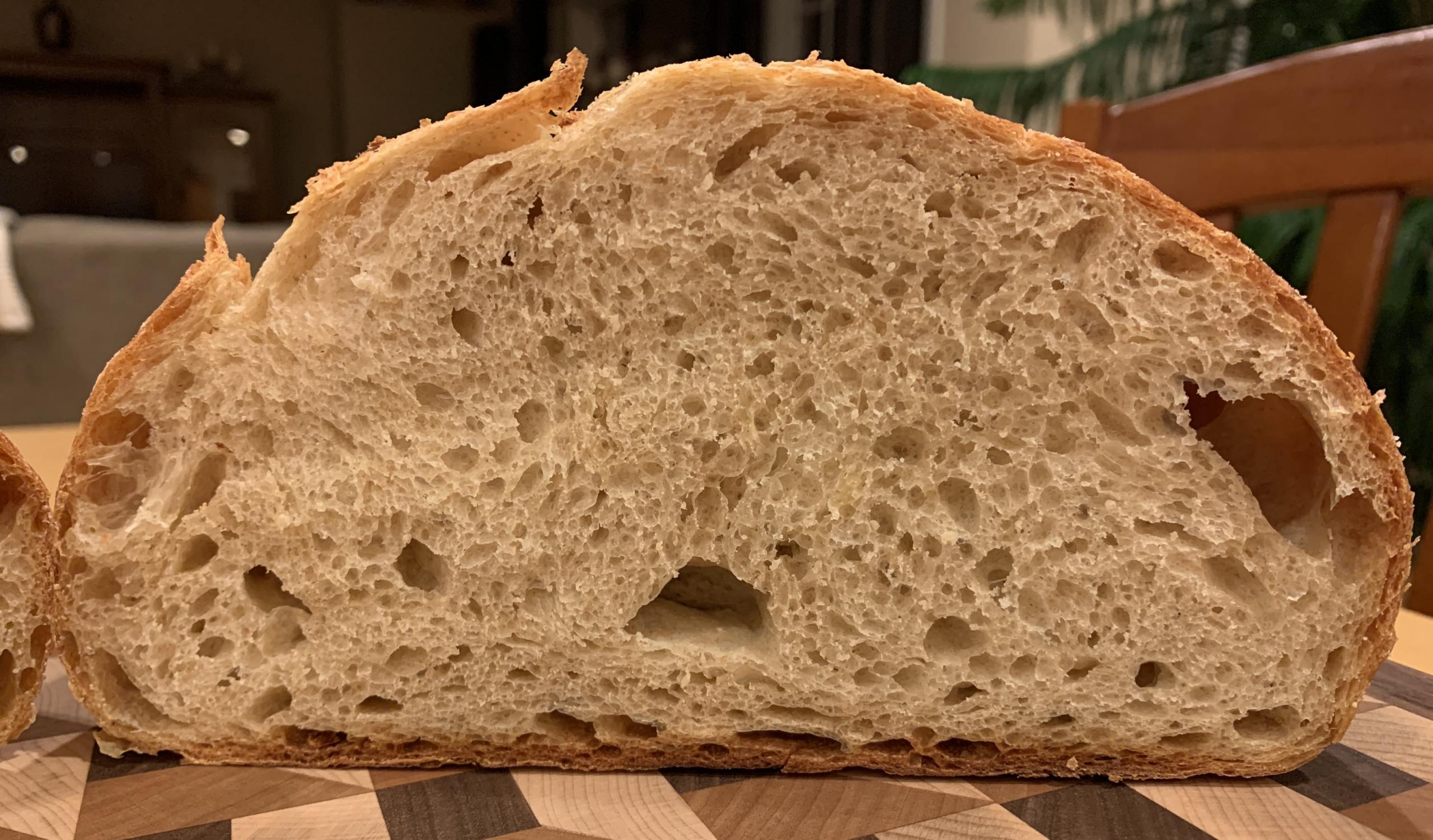

- HeiHei29er's Blog
- Log in or register to post comments
means you had the seam up for the bake? Which when it works right, as here, we get to see some incredibly lovely bursting of the skin during the oven spring. I've only worked with potato breads a few times, but by now I've come to realize that aside from creating a soft bread, the potato provides a wonderful bloom on the score or fracture line.
Alan
Thank you Alan and great observations as always! The potato does make a soft crumb. I always have a tough time deciding when the bake is done, and have started pushing the final temps up. This one I stopped at 208 deg. And I agree, it does provide some unique colors in the crust!
And likely very tasty, too. I’m eager to see the formula and process.
Paul
Thank you Paul! Today is a shopping trip with the family, but I brought my computer. I think I’ll need a sanity break mid afternoon and will try to get on-line and add the method. :-)
I keep meaning to make a potato bread but you know… more breads than time! I always proof with what passes for a seam down. I just gently fold in four corners pinch them and then proof and flip it out so they burst when they bake. Love seeing what the bread will do !
Beautiful golden looking loaf Troy. The potatoes must bring such great tenderness to the crumb. I see that you’re still enjoying the baking seam side up style, it looks great.
Benny
Thanks Benny. I do like mixing the natural score shaping in periodically. It worked really well on this dough. Not sure if it was the pudding-like consistency of the potatoes or if I got the hydration just right, but this was one of the more supple doughs I’ve shaped. It transitioned from the boule to the oval quite easily.